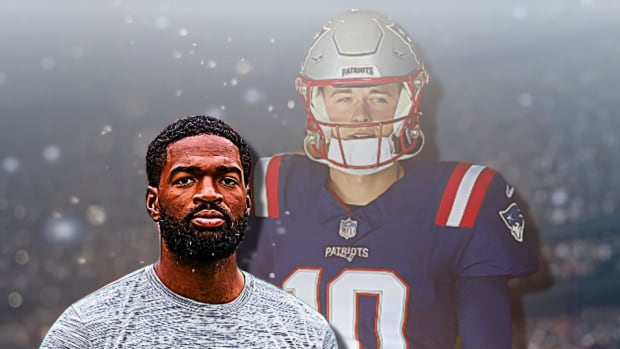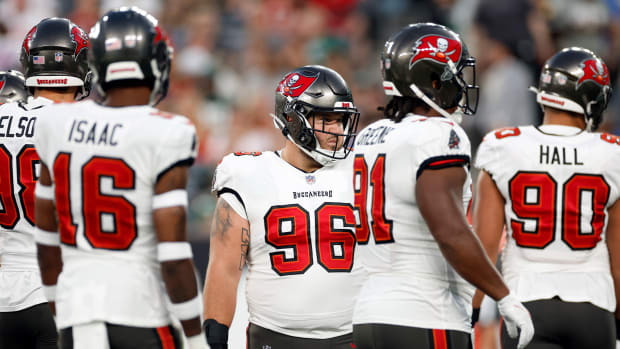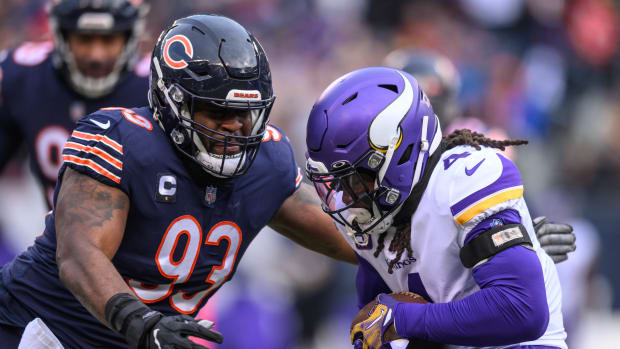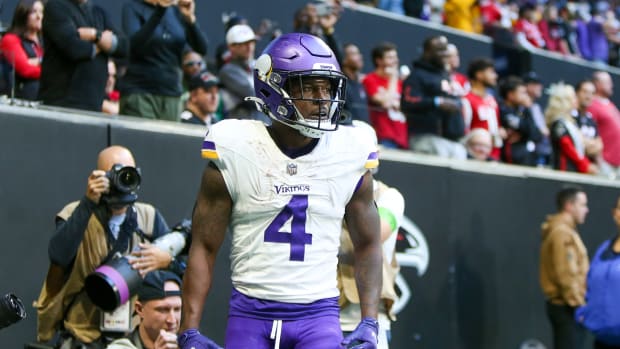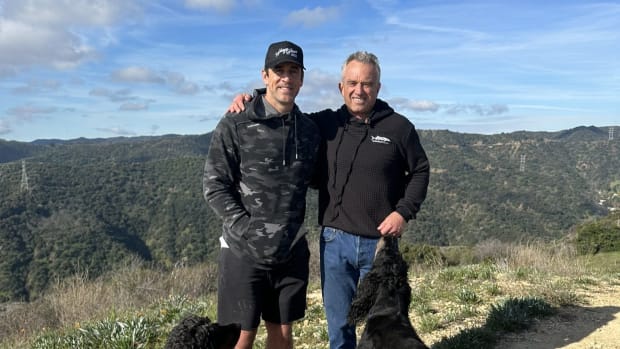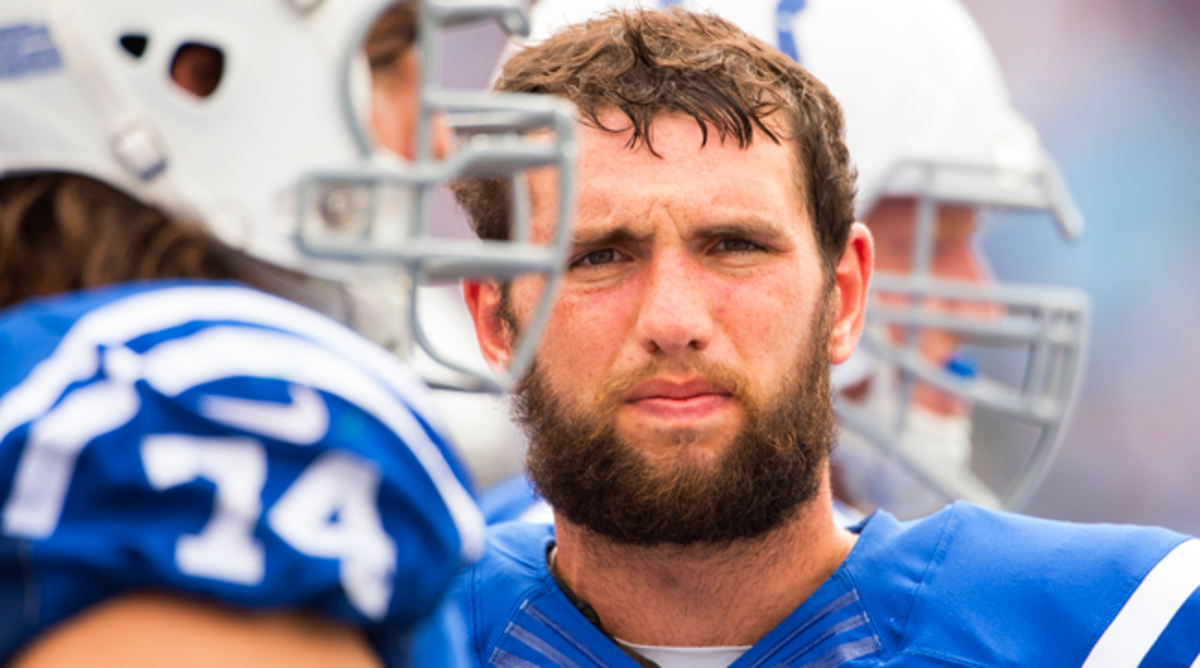
The Trouble with Andrew Luck (It’s Not His Fault)
Let’s get one thing straight: Andrew Luck is still a top-echelon quarterback. For his first three seasons he was as good as any in the NFL. And at 26, he’s capable of not just recapturing that magic but building on it. He has the intelligence of a young Peyton Manning, the throwing prowess of Carson Palmer, the strength and mobility of Cam Newton, and the playmaking knack of Ben Roethlisberger.
But what’s also true: Luck is coming off a horrendous 2015 season. He got hurt, often threw inaccurately and made enough bad decisions to register 13 turnovers in just seven starts (and it could have been worse).
So how can the Colts get their quarterback on track again? Luck would probably take umbrage at the premise and assert that he has to get himself back on track by playing better. He does, but it’s not so simple.
Before exploring how to get back on track, we must first understand what put Luck and the Colts off track.
Start with a bad offensive line—one that was iffy on the edges and outright deplorable inside. The line couldn’t move bodies in the ground game, which made the Colts too pass-oriented. From there the line struggled in protection, particularly against twists, stunts and gap-exchange blitzes—really anything where defenders crisscrossed in some fashion to make blockers adjust laterally. That’s a major problem for young linemen who lack athleticism and have not honed the peripheral vision that comes with experience. Worse yet, many defenses directed their pass rush inside, attacking Indy’s weak line at its weakest spot. This created pressure right up the middle, which no quarterback can survive.
The Colts’ Week 9 game against the Broncos was the low point. It was a game they actually won, but the Broncos, with their dynamic pass rushers and creative twists and stunts, hit Luck 11 times, most of them square body blows. Somewhere in there, he suffered a lacerated kidney and abdominal damage. He didn’t play again in 2015.
The Denver game also offered a snapshot of what exacerbated Indy’s protection woes: Colts wide receivers could not shake the fervid press coverage of cornerbacks Chris Harris, Aqib Talib and Bradley Roby. This included T.Y. Hilton, whose electrifying wheels tend to spin in place when he’s not afforded a clean release off the line. (This, by the way, is why Hilton is not quite a true No. 1 receiver, regardless of what statistics might say.)
The worst scheme you can employ when you have receivers who struggle against the jam and offensive linemen who don’t move well is one that features five- and seven-step dropbacks. That’s often the scheme the Colts employed. Their reasoning was likely two-fold. One: Luck is tremendous late in the down, especially from the pocket. Two: the Colts aspired to have a power running game. Deep-drop passing attacks often correlate well with power running games because such dropbacks usually have an extra tight end or back in to help block, and so they occur out of heavier, run-oriented formations.
Colts GM Ryan Grigson has taken some steps to improve the talent around Luck. He spent a first-round pick on Alabama center Ryan Kelly and a third-rounder on Texas Tech’s Le’Raven Clark, who can play guard or tackle. Good steps in what appear to be the right direction, but there are more to take. Plus, while Indy’s receiving corps (Hilton, Donte Moncrief and Phillip Dorsett) is dangerously fast, physical press coverage issues remain. If Hilton could consistently shake press he would have learned to by now. Dorsett’s lissome body structure isn’t ideal for shedding jams. Moncrief might have hope; it depends on if he can augment what so far is a solid foundation of technical mechanics. Nevertheless, we’re talking about a group that overall must be helped schematically through intertwined route combinations, presnap motion and condensed formations—tactics that force press corners to back off.
Factor this in with a suspect O-line that’s not yet fully remade and it’s apparent that Indy’s system needs to change. Luck might be great late in the down, but that’s also when most turnovers and injuries occur. You can’t play late in the down with limited blockers and overpowered receivers; the longer a down goes, the likelier it is those guys will be exploited.
Luck has already said he needs to do a better job protecting himself. That’s a nice sentiment, and undoubtedly he’s working hard this offseason to enact it. But guys with Luck’s sort of ability never actually play with self-preserving discipline in the heat of battle. Besides, if it’s a deep-drop passing game, Luck will be forced to go late in the down anyway.
Two prime examples of quarterbacks once in Luck’s shoes are Jay Cutler and Ben Roethlisberger. As a pure thrower, Cutler is as talented as anyone in football. Often, this has led to him taking ill-conceived risks and unnecessary hits. But last year, Adam Gase, in his one and only year as Chicago’s offensive coordinator, figured out how to change this. Gase believed that Cutler’s problems came against four-man rushes, not blitzes. When the four-man rush didn’t get home, Cutler would hold the ball, the play would eventually lose structure and then anything—good or bad, but too often bad—could happen from there. So, Gase essentially forced Cutler to treat every play like a blitz by having him get the ball out on a three-step dropback. In other words, Gase’s system implemented the disciplined, prompt decision-making that Cutler’s raw talents always prevented him from adopting.
The same thing happened with Roethlisberger. When Todd Haley took over as Pittsburgh’s offensive coordinator, in 2012, he installed more spread sets and quick-strike throws. At first, the growing pains were distressing. But now Roethlisberger is one of the sharpest timing passers in the league. He’s taken fewer hits and is a better player in his mid-30s than he was in his mid- and late-20s (something nobody familiar with Ben’s bruising style would have ever predicted).
Through all of this, Cutler and Roethlisberger have not lost their playmaking prowess. Cutler made a handful of remarkable late fourth quarter touchdowns to win games last season. For Pittsburgh, Antonio Brown is the most productive receiver in the league in large part because Roethlisberger still channels his Big Ben when needed.
Every game presents a few critical third-and-long situations. Wins and losses are often determined by what happens here. The key is to not encounter too many third-and-longs offensively. That’s the idea of the quick-strike passing game.
We hear all the time that the NFL is a pass-happy league. It is, but probably not in the way most people imagine. The increase in passes hasn’t been in the form of 18-yard dig routes or 25-yard post patterns; they’re six-yard slants, four-yard flat routes and wide receiver screens. They’re really just new-age extensions of the running game. Which is why, despite the NFL being a pass-happy league, every coach still emphasizes the importance of play-calling balance. You can call five passes in a row and still be balanced as long as three or four of those passes are at the short and shallow-intermediate levels.
New Colts offensive coordinator Rob Chudzinski must construct a system along these lines. That’s easier said than done. The Colts have the requisite quick, darting receivers for this, but they’re not very flexible at running back or tight end. Frank Gore and Robert Turbin are traditional ballcarriers, and the only proven tight end, Dwayne Allen, is more of an H-back than a downfield pass catcher. Allen’s flexibility is in the form of presnap motion, misdirection blocking and maybe the occasional route from the slot. Contrast this with the offense Cutler had last year, which featured versatile tight end Martellus Bennett and even more versatile running back Matt Forte. Or Roethlisberger’s offense, which had receiving back dynamo Le’Veon Bell. After Bell’s knee injury, the Steelers were left with the more conventional DeAngelo Williams, who played with tight end Heath Miller (also very conventional). But by that point, they had been practicing the flex formations with Bell for so many years that the backups were prepared to keep that system afloat. (Granted, having Antonio Brown and Martavis Bryant helped.)
Maybe this is Chudzinski’s saving grace. With a fast receiving corps and smart QB, you can, with enough dedication and practice, build a quick-strike aerial assault even if your backs and tight ends are better suited for a more traditional offense. The other factor that’s easy to overlook is having a smart QB. In order to get the ball out quickly, a quarterback must diagnose the coverage and anticipate disguises before the snap. If he can’t, he’ll need extra time after the snap to read the field and make a decision. That’s extra time the play design doesn’t allow for.
Luck has more than ample football intelligence to become a commandeering ball-out-quickly QB. The beauty is that it’s not a binary equation. Progression in the presnap phase does not mean regression in the postsnap phase. At any time Luck can still do the playmaking that makes him special. That is, if he’s not being asked to do it all the time.
• Question? Comment? Let us know at talkback@themmqb.com


































